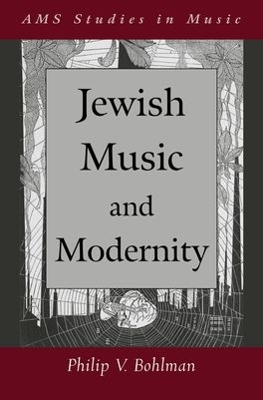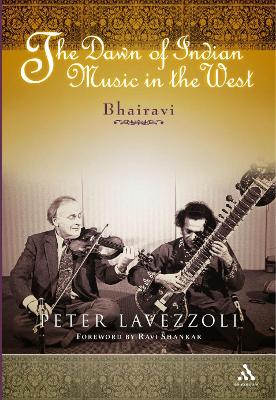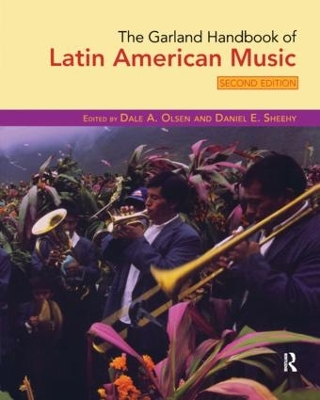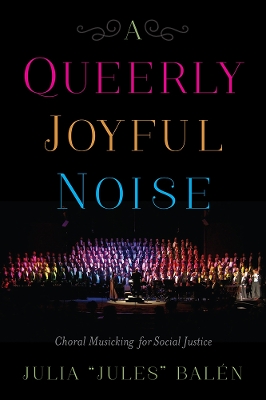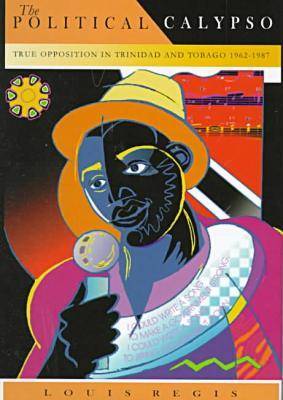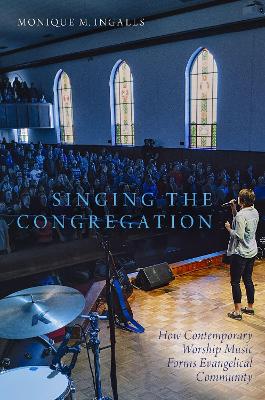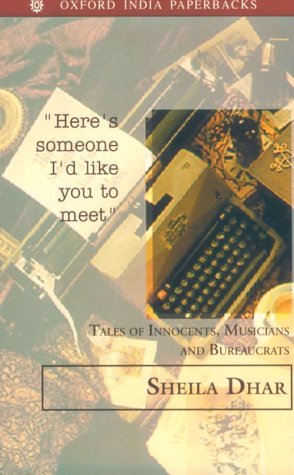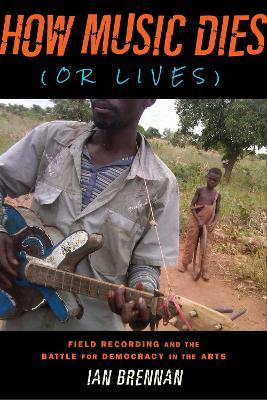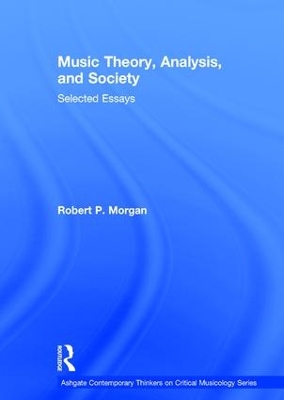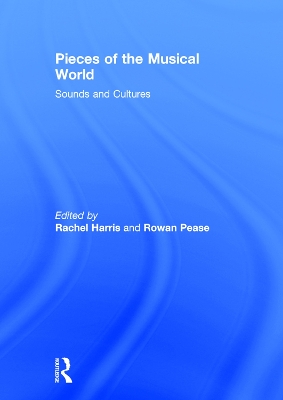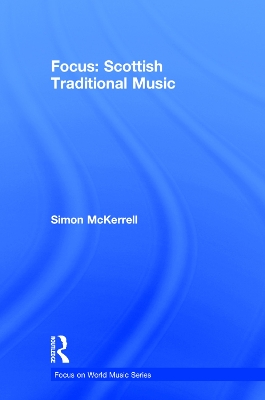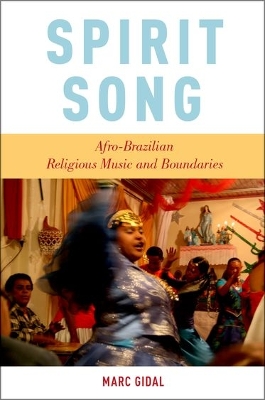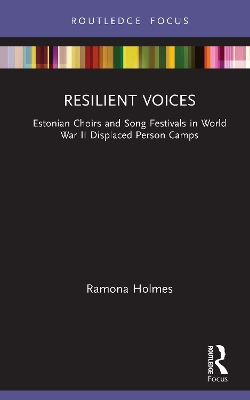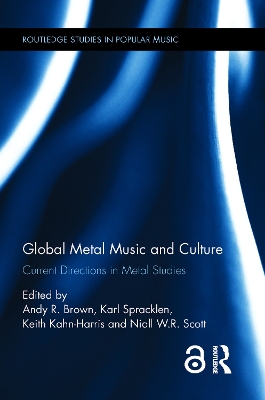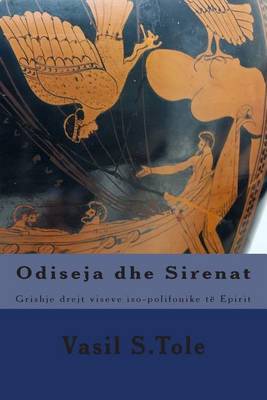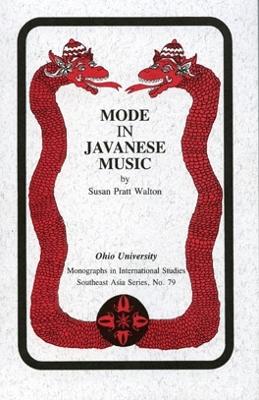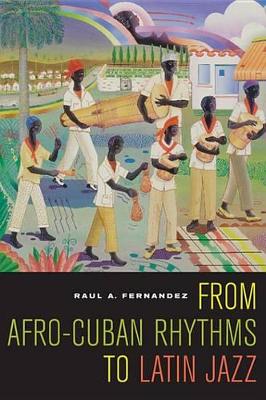Jewish Music and Modernity (AMS Studies in Music)
by Philip V. Bohlman
Is there really such a thing as Jewish music? And how does it survive as a practice of worship and cultural expression even in the face of the many brutal aesthetic and political challenges of modernity? In Jewish Music and Modernity, Philip V. Bohlman imparts these questions with a new light that transforms the very historiography of Jewish culture in modernity. Based on decades of fieldwork and archival study throughout the world, Bohlman intensively examines the many ways in which music ha...
A little more than 50 years ago, in 1955, Ali Akbar Khan issued an LP called "Music of India: Morning and Evening Ragas", with spoken introduction by violinist Yehudi Menuhin. Until then, Indian music was terra incognita in the West. When the same album was reissued as a CD in 1995, under the title "Then and Now", it was nominated for a Grammy. Between "then and now" has been the explosive influence of Indian music and culture in the West. Words such as karma, yoga, raga, nirvana, all once unkno...
The Garland Handbook of Latin American Music
The Garland Handbook of Latin American Music is comprised of essays from The Garland Encyclopedia of World Music: Volume 2, South America, Mexico, Central America, and the Carribean, (1998). Revised and updated, the essays offer detailed, regional studies of the different musical cultures of Latin America and examine the ways in which music helps to define the identity of this particular area. Part One provides an in-depth introduction to the area of Latin America and describes the history, ge...
Carl Stumpfs Berliner Phonogrammarchiv (Schriftenreihe Der Carl Stumpf Gesellschaft, #6)
Der Band versammelt Vortrage, die auf der 4. Jahrestagung der Carl-Stumpf-Gesellschaft gehalten wurden. Die Tagung fand im Ethnologischen Museum Berlin und dort an dem von Carl Stumpf 1900 gegrundeten Phonogrammarchiv statt. Dementsprechend behandeln die meisten Beitrage Forschungen der Musikethnologie aus unterschiedlichen erkenntnistheoretischen Perspektiven. Der Band prasentiert sowohl aktuelle Arbeiten als auch Untersuchungen, die an die Forschungen von Stumpf oder seinen Schulern anknupfen...
River of Tears is the first ethnography of Brazilian country music, one of the most popular genres in Brazil yet least-known outside it. Beginning in the mid-1980s, commercial musical duos practicing musica sertaneja reached beyond their home in Brazil's central-southern region to become national bestsellers. Rodeo events revolving around country music came to rival soccer matches in attendance. A revival of folkloric rural music called musica caipira, heralded as musica sertaneja's ancestor, al...
A Queerly Joyful Noise examines how choral singing can be both personally transformative and politically impactful. As they blend their different voices to create something beautiful, LGBTIQ singers stand together and make themselves heard. Comparing queer choral performances to the uses of group singing within the civil rights and labor movements, Julia "Jules" Balen maps the relationship between different forms of oppression and strategic musical forms of resistance. She also explores the pote...
Calypso, a traditional form of music in the Caribbean, began in Trinidad and Tobago as a subtle protest against British rule. Influenced by African and native Caribbean rhythms, the calypso (along with Jamaican raggae) defines the music of the region. Louis Regis examines the evolution of the political calypso from 1962 to 1987, the period of Trinidad/Tobago's independence from Britain, and presents the text of lyrics from this popular folk-urban musical form. Following the songs and their theme...
Contemporary worship music shapes the way evangelical Christians understand worship itself. Author Monique M. Ingalls argues that participatory worship music performances have brought into being new religious social constellations, or "modes of congregating". Through exploration of five of these modes—concert, conference, church, public, and networked congregations—Singing the Congregation reinvigorates the analytic categories of "congregation" and "congregational music." Drawing from theoreti...
In diesem Buch werden die aserbaidschanische Musikkultur im 20. Jahrhundert und die Rezeption westlicher Musik aus dem Kontext des aserbaidschanischen Bewusstseins heraus untersucht. Unter anderem wird den historisch tief verankerten musikalischen Formen und Inhalten der Arschig- und Mugam-Musik, Volkstanzen und Volksliedern sowie den traditionellen Musikinstrumenten grosse Aufmerksamkeit geschenkt. Anhand verschiedener Werkanalysen und Notenbeispiele aserbaidschanischer Komponisten wird gezeigt...
All recordings document life, arising from a specific time and place, and if that place is artificial, the results will be as well. Culled from a lifetime of learning through failure and designed to provoke thought and inspiration for artists in every medium, How Music Dies (or Lives) is a virtual how-to manual for those on a quest for authenticity in an age of airbrushed and Auto-Tuned so-called "artists." Author and Grammy-winning producer Ian Brennan chronicles his own journeys to find new an...
The symphony retained its primacy as the most prestigious large-scale orchestral form throughout the first half of the twentieth century, particularly in Britain, Russia and the United States. Likewise, Australian composers produced a steady stream of symphonies throughout the period from Federation (1901) through to the end of the 1950s. Stylistically, these works ranged from essays in late nineteenth-century romanticism, twentieth-century nationalism, neo-classicism and near-atonality. Austral...
Music Theory, Analysis, and Society (Ashgate Contemporary Thinkers on Critical Musicology)
by Robert P. Morgan
Robert P. Morgan is one of a small number of music theorists writing in English who treat music theory, and in particular Schenkerian theory, as part of general intellectual life. Morgan’s writings are renowned within the field of music scholarship: he is the author of the well-known Norton volume Twentieth-Century Music, and of additional books relating to Schenkerian and other theory, analysis and society. This volume of Morgan’s previously published essays encompasses a broad range of issues,...
Pieces of the Musical World: Sounds and Cultures
by Rachel Harris and Rowan Pease
Pieces of the Musical World: Sounds and Cultures is a fieldwork-based ethnomusicology textbook that introduces a series of musical worlds each through a single "piece." It focuses on a musical sound or object that provides a springboard from which to tell a story about a particular geographic region, introducing key aspects of the cultures in which it is embedded, contexts of performance, the musicians who create or perform it, the journeys it has travelled, and its changing meanings. A collabo...
Focus: Scottish Traditional Music (Focus on World Music)
by Simon McKerrell
Focus: Scottish Traditional Music engages methods from ethnomusicology, popular music studies, cultural studies, and media studies to explain how complex Scottish identities and culture are constructed in the traditional music and culture of Scotland. This book examines Scottish music through their social and performative contexts, outlining vocal traditions such as lullabies, mining songs, Scottish ballads, herding songs, and protest songs as well as instrumental traditions such as fiddle music...
Fiddling has had a lengthy history in Africa which has long been ignored. Jacqueline Cogdell DjeDje corrects this oversight with an expansive study on fiddling in the Fulbe, Hausa, and Dagbamba cultures of West Africa. DjeDje not only explains the history of the instrument itself, but also discusses the processes of stylistic transference and adaptation, suggesting how these may have contributed to differing performance practices. Additionally, DjeDje delves into the music, the performance conte...
In Spirit Song: Afro-Brazilian Religious Music and Boundaries, ethnomusicologist Marc Gidal explains how and why a multi-faith community in southern Brazil uses music to combine and segregate three Afro-Brazilian religions: Umbanda, Quimbanda, and Batuque. Spirit Song will be the first book in any language about the music of Umbanda and its close relative Quimbanda-twentieth-century fusions of European Spiritism, Afro-Brazilian religion, and Folk Catholicism-as well as the first publication in E...
The aftermath of World War II sent thousands of Estonian refugees into Europe. The years of Estonian independence (1917-1940) had given them a taste of freedom and so relocation to displaced person (DP) camps in post-war Germany was extremely painful. One way in which Estonians dealt with the chaos and trauma of WWII and its aftermath was through choral singing. Just as song festivals helped establish national identity in 1869, song festivals promoted cultural cohesiveness for Estonians in WWII...
Global Metal Music and Culture (Routledge Studies in Popular Music)
This book defines the key ideas, scholarly debates, and research activities that have contributed to the formation of the international and interdisciplinary field of Metal Studies. Drawing on insights from a wide range of disciplines including popular music, cultural studies, sociology, anthropology, philosophy, and ethics, this volume offers new and innovative research on metal musicology, global/local scenes studies, fandom, gender and metal identity, metal media, and commerce. Offering a wid...
Odiseja Dhe Sirenat, Grishje Drejt Viseve Iso-Polifonike Te Epirit
by Vasil S Tole
Building a Library (Oxford Paperbacks)
Mode in Javanese Music (Research in International Studies, Southeast Asia)
by Susan Pratt Walton
One of the most controversial aspects of Javanese gamelan music is its musical mode, pathet. From her experience as a performer of sindhenan, or female singing, Walton analyses the melodies and defines the basic laws of mode for sindhenan. She explains more convincingly than previous authors how two systems of mode operate simultaneously in gamelan music to enhance its aesthetic appeal.
From Afro-Cuban Rhythms to Latin Jazz (Music of the African Diaspora, #10)
by Raul A Fernandez
This book explores the complexity of Cuban dance music and the webs that connect it, musically and historically, to other Caribbean music, to salsa, and to Latin Jazz. Establishing a scholarly foundation for the study of this music, Raul A. Fernandez introduces a set of terms, definitions, and empirical information that allow for a broader, more informed discussion. He presents fascinating musical biographies of prominent performers Cachao Lopez, Mongo Santamaria, Armando Peraza, Patato Valdes,...
